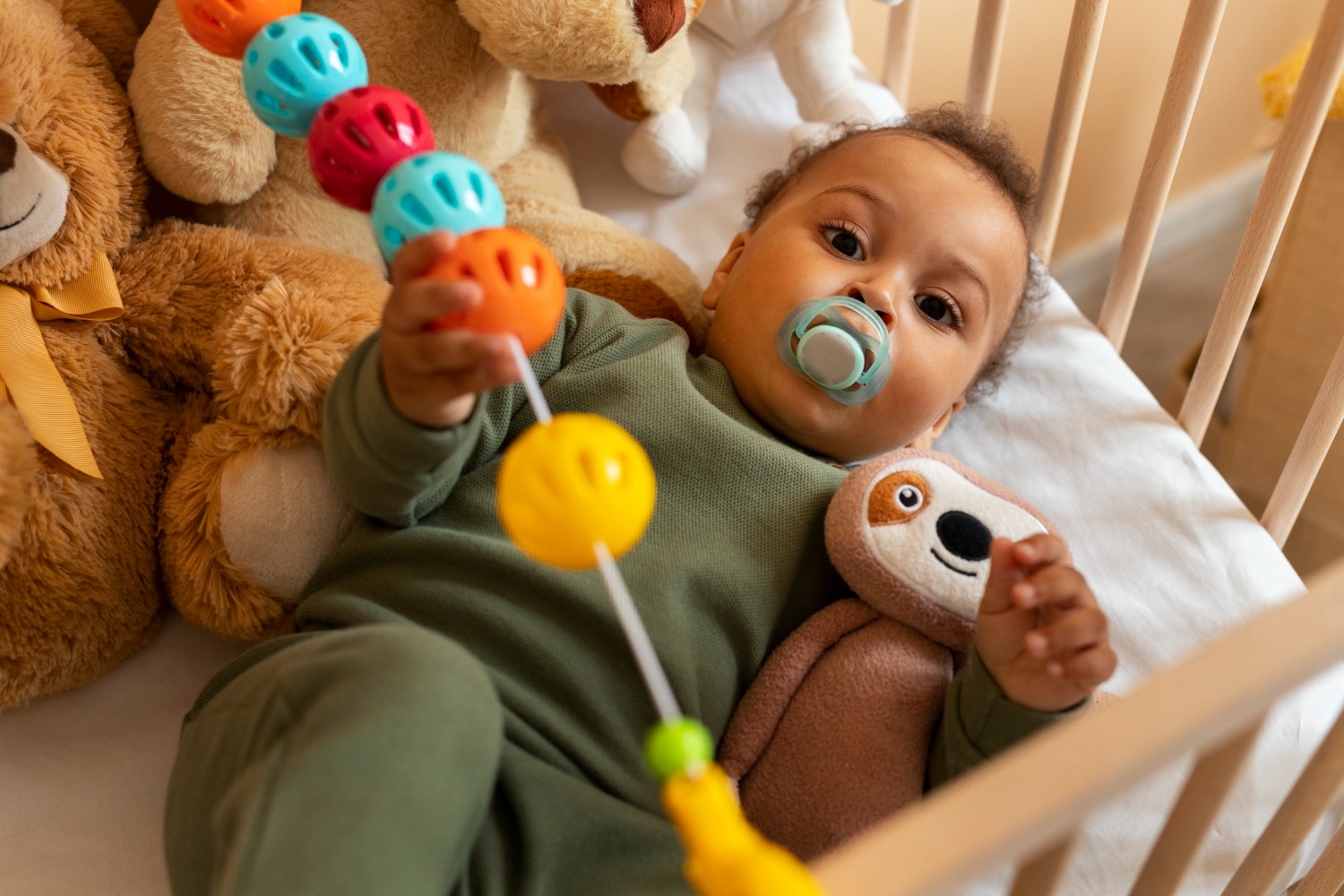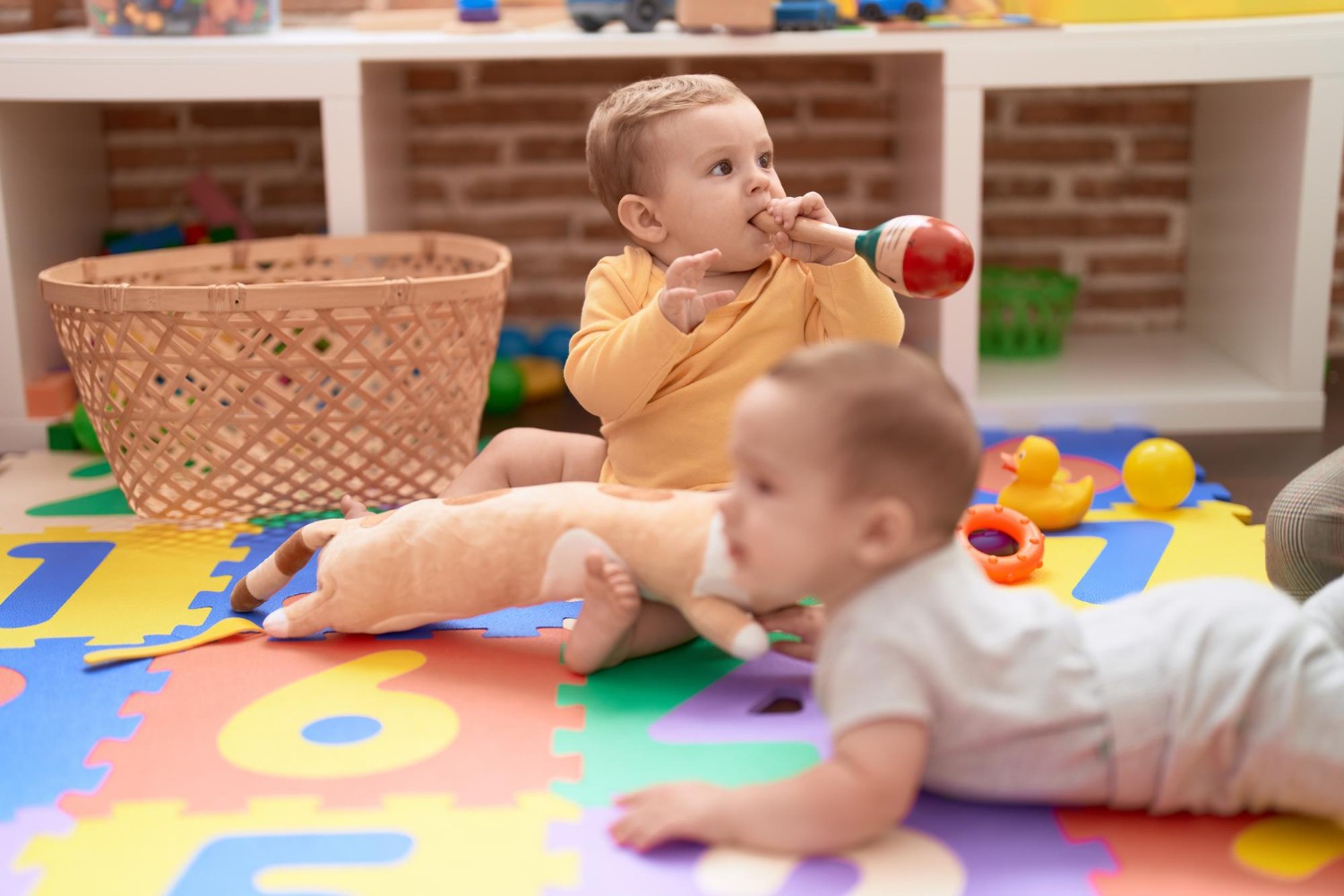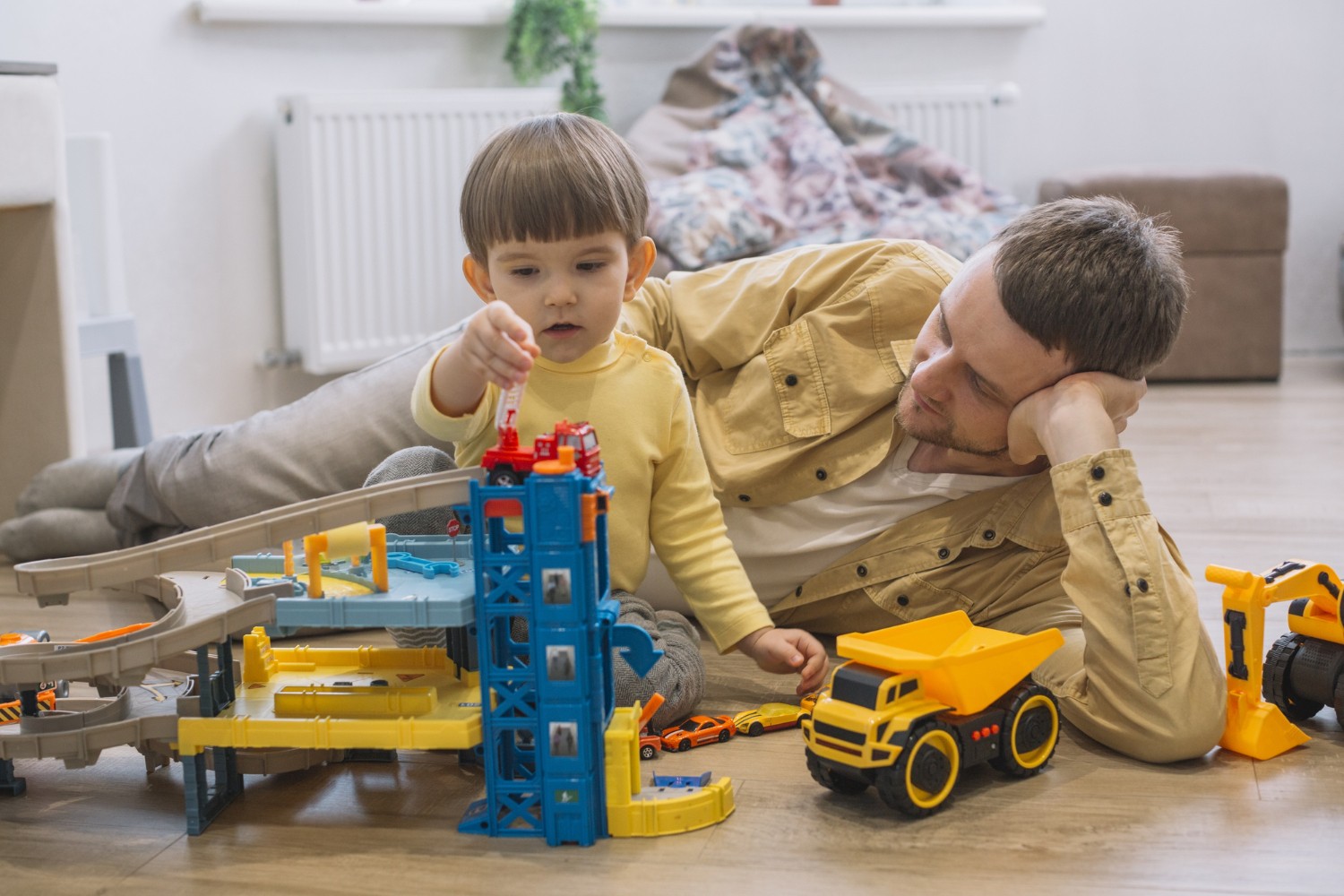Do babies need toys…..?

Is it really
necessary for babies to have toys? This is a confusing and complicated
question, but in reality, the answer is quite simple: babies do need toys.
However, the key is to choose the right toys and use them appropriately to
benefit our little ones. Today, we will explore what factors to consider when
selecting toys for our children and how to make the most of them.
Welcome to the Kids Gallery blog. Typically, we give toys to our children on occasions like birthdays, when meeting new parents, or when our child insists on having a particular toy. Sometimes, we might even pick up a toy that we personally like. However, the question is whether the toy we have chosen is really useful for our child or not. To determine this, we need to consider a few things, such as our child's age, preferences, interests, and the skills we want to develop in them.
Usually, the skills that a child develops range from 10 months to 5 or 6 years, with further enhancement occurring after that period. During the early years, the most crucial aspects of a child's development include feelings and emotions, social skills, and learning abilities. Sight development is also important.
Sight development

Sight development is
also important. In the initial months, a baby's vision is limited, and they can
only see things at a short distance. At this time, their physical development
is not fully matured, making it difficult for them to grasp objects. If you are
choosing toys for newborns or 3 to 4-month-old babies, consider that they can
only see and recognize toys to a certain extent. In this stage, selecting toys
that improve their eyesight is essential. Opt for lightweight, soft, and rubber
toys with gentle illumination.
Hearing

From a very early
age, babies are able to distinguish between different sounds and can focus
their gaze on loud noises. By the time they are 6 to 12 months old, they are
also learning the sounds of words and starting to mimic and babble. Encourage
them to utilize their ears by reading to them, singing, or turning on music,
and employing a few musical or sound-producing toys close to their ears. Play a
variety of soothing lullabies, your favorite rock station on the radio, wooden
musical toys, and clapping along to nursery rhymes you sing. Variety is the
key. We discover that parents like to shake and produce noise for their infants
using little musical things.
Touch.
From the moment they
are born, newborns are drawn to the touch of their own skin. You will observe
them reaching for your hands, fingers, and face, particularly when you are
nursing or giving them a tight hug. Start introducing them to a wide range of
tactile textures after a few months. Provide toys that are cold, soft, squishy,
shiny, smooth, rough, or scratchy. Observe the various reactions they give to
each one. Sitting with them on the floor, offering a basket full of items like
metal spoons, silky scarves, wooden rattles, rubber toys, a soft doll or plush,
velcro strips, smooth wooden blocks—basically anything that is safe for the
baby to touch, grab, and put in their mouth—is a great way to accomplish this.
Learning.

You can select
learning toys for your preschooler (ages 3-5) and toddler (ages 1-3).
Young children and infants frequently use their senses to investigate their
surroundings. Differently textured, colored, and sounding toys appeal to their
senses and improve their cognitive development. Engaging in play with toys
promotes the growth of both fine and gross motor abilities. Fine motor
abilities are developed through grasping, stacking, and manipulating items;
gross motor skills are developed through crawling, walking, and climbing. Pretend play toys allow children to use
their imagination and creativity. Whether they're playing house, pretending to
be doctors, or creating their own stories, imaginative play fosters cognitive
and social development.
Building
Blocks.
Skills Developed:
Fine motor skills, hand-eye coordination, spatial awareness, creativity.
Usefulness: Building
blocks encourage children to manipulate and stack objects, fostering the
development of both fine and gross motor skills. Additionally, they promote
imaginative play as children create structures and learn about balance and
stability.
Puzzle
Games.
Skills Developed:
Problem-solving, cognitive skills, hand-eye coordination.
Usefulness: Puzzles
challenge children to think critically and problem-solve as they figure out how
different pieces fit together. This enhances cognitive development and spatial
reasoning.
Art
Supplies.
Skills Developed:
Creativity, fine motor skills, self-expression.
Usefulness: Crayons,
markers, and paint encourage artistic expression, helping children develop
their creativity and fine motor skills. Art activities also provide a means for
self-expression and communication.
Musical
Instruments.
Skills Developed:
Auditory discrimination, rhythm, coordination.
Usefulness: Musical toys contribute to the development of a child's auditory senses and sense of rhythm. Playing simple instruments helps improve hand-eye coordination and introduces them to different sounds and tones.
Educational Games and Toys.

Skills Developed:
Early literacy, numeracy, memory.
Usefulness:
Educational toys, such as alphabet blocks or number games, can help introduce
basic concepts in a fun and engaging way. These toys lay the foundation for
early academic skills and promote a love for learning.
Outdoor
Toys.
Skills Developed:
Gross motor skills, social skills.
Usefulness: Items
like balls, tricycles, or climbing structures encourage physical activity,
aiding in the development of gross motor skills. Outdoor play also provides
opportunities for social interaction and cooperation.
Role-Playing
Toys.
Skills Developed:
Social skills, language development, imagination.
Usefulness:
Role-playing toys, like dolls or action figures, allow children to engage in
imaginative play. This type of play enhances language skills, promotes social
interactions, and helps children make sense of the world around them.
Sensory
Toys.
Skills Developed:
Sensory exploration, tactile discrimination.
Usefulness: Toys with
different textures, shapes, and materials stimulate a child's senses. Sensory
play is essential for cognitive development and can be particularly beneficial
for children with sensory processing differences.
Thus, as your child grows and matures, consider the next phase. Have they begun to make grabs for objects during nursing? Examine the possibilities you have that will amuse them in six months and that they can safely reach and grab. While shape sorters and other similar items are fantastic, pay attention to the recommended age ranges for each device. Do they like to put objects in their mouths and pop them? Seek for safe, natural products with several applications. For example, our Tikiri Natural Rubber toys are fantastic as teethers, bath toys, and they rattle, so they will be used for a long time instead of just one usage. They are completely sealed, making them safe to use in the bath.
https://kidsgallerynx.com/
Recent Posts
KidsGalleryToys | Nurturing Development in Children Under Three Through Toys
Guide To Buying The Best Toys Based On Age
Best Toys for 6-Month-Olds Kids
Newborn Baby Toys
Playful Wonders: Where Imagination Meets Toy Magic in Our Kids' Gallery.
Welcome to Kids Gallery NX
Welcome to Kids Gallery NX, where the magic of childhood comes to life! Immerse yourself in a world of wonder and excitement as you explore our enchanting Toys Marketplace. We understand the joy that toys bring to children, and our carefully curated selection ensures that every visit sparks imagination and creativity.
At Kids Gallery NX, we pride ourselves on offering a diverse range of high-quality toys that cater to various ages and interests. From educational games that stimulate young minds to the latest in interactive and innovative playthings, we've got something for every little dreamer.
Our mission is to provide a safe and delightful online space where parents and caregivers can discover the perfect toys for their little ones. Our collection is not just about play; it's about fostering growth, learning, and creating cherished memories.
Join us at Kids Gallery NX, the ultimate destination for all things playful. Explore, discover, and make every moment magical with our Toys Marketplace – because every child deserves a gallery of joy!






